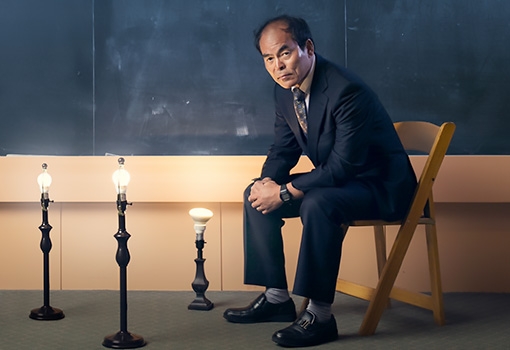Not too long ago, if you left the lights on by accident overnight or while you were on a trip, you would pay for that mistake with big increases to your electricity bill. Heat producing, often short-lived and relatively inefficient, incandescent, fluorescent, halogen, mercury, and other lamps that were long the mainstays of indoor and outdoor lighting worldwide also accounted for a significant portion of global energy consumption.
That all changed with the creation of the bright blue LED, an efflor led by UC Santa Barbara materials and electrical and computer engineering scientist Shuji Nakamura, who, along with Hiroshi Amano and Isamu Akasaki (both from Nagoya University), won the 2014 Nobel Prize in Physics for unlocking the technology that led to the birth of the white LED.
Now, Nakamura, has received another in a long line of honors arising from his LED work, the 2019 Leigh Ann Conn Prize for Renewable Energy.

UCSB professor and Nobel Laureate Shuji Nakamura. Photograph by Matt Perko.
